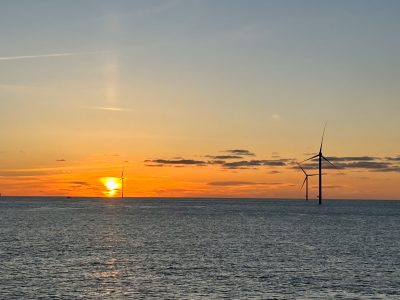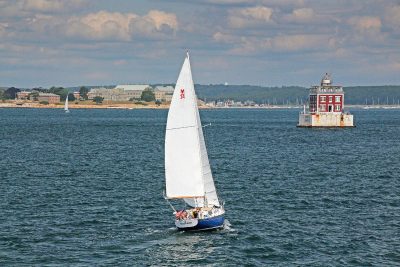
The 2024 Coastal Perspective Lecture Series begins Feb. 6 with a talk titled, “The Development, Construction and Fisheries Monitoring of Ørsted’s South Fork Wind Farm.” Now in its 28th year, the lectures are free and can be accessed in person or on line. All begin at 7:30 p.m. in the auditorium of the Academic Building at UConn’s Avery Point campus in Groton.
During the first talk, Chris Sarro, marine scientist for Ørsted, and Robert Soden, permit manager for the company, will discuss how building an offshore wind farm in the United States is a long, complicated process which entails years of permitting and site investigation before construction can begin.
Ørsted’s South Fork Wind project will be the first commercial scale offshore wind farm to be completed in this country. This project took almost 10 years to complete from the time of the lease purchase to delivery of first power. Part of the permitting process is developing and executing a fisheries monitoring plan to examine the effects of offshore wind construction and operations on commercially, ecologically and recreationally important species. This talk will provide a high-level overview of the development process and construction activities for South Fork Wind including a detailed look at the fisheries monitoring for the project. Click here for more information.
The second talk in the series, at 7:30 p.m. on Feb. 20, will feature Patrick Lynch, an artist, author, designer and photographer.

In a talk titled “A Tale of Two Estuaries,” Lynch will focus on Connecticut’s two largest riverine estuaries that have long been recognized as world-class natural treasures, and are also rich with the human history of our region. The two very different characters of the Connecticut River and the Thames River estuaries are due to accidents of geology that determined their fates.
The gorgeous rural character of the Lower Connecticut River is due to vast sediments left behind by the Ice Age glaciers, which prevented the development of large ports on the Connecticut. The historical importance of the Thames River ports of New London and Groton grew from the deep natural harbors of the Thames estuary. Both rivers have been critical to New England’s natural history and human development, and both estuaries are now part of the new Connecticut National Estuarine Research Preserve. This talk will compare and contrast the Thames and Connecticut River estuaries, emphasizing the natural history of our regional estuaries and coastal habitats. Click here for more information.
Other lectures in the series will be:
- March 5: “Ramshackle Housing and the Erasure of 19th Century Atlantic Fishing Communities,” given by Maura Coughlin of the Northeastern University Department of Art + Design Click here for more information.
- March 19: “Beyond the Surface: Forecasting Ocean Acidification and Other Stressors Facing Marine Resources in a Changing Climate,” given by Samantha Siedlecki, UConn associate professor of marine sciences Click here for more information.
- April 2, “Shadows in the Water: What Sharks Tell Us About Ourselves,” given by Michaela J. Thompson, post-doctoral research fellow in the Harvard Extension School, Sustainability and Management. Click here for more information.
- April 16, “Spineless: The Magical World of Marine Invertebrates, and Perspectives on our Finger on the Pulse of Changes in Coastal Invertebrate Diversity,” given by James T. Carlton, professor of marine sciences emeritus at Williams College and director emeritus of the Williams College-Mystic Seaport Maritime Studies Program; and Krystal Rose, curator of collections at Mystic Seaport Museum. Click here for more information.
Recordings of all lectures will be available after each event. To participate in the lecture on-line:
Click to sign on: https://uconn-cmr.webex.com/uconn-cmr/j.php?MTID=mc2942830413ac0a17ac284d44bacdb8f
- Meeting number (access code): 2634 524 4333
- Event password: coastal
- Join the audio conference only:
- +1-415-655-0002 US Toll
- Use meeting number (access code) shown above.
This series is sponsored by Connecticut Sea Grant College Program, Ørsted, UConn Department of Marine Sciences, UConn Maritime Studies Program and the UConn Avery Point Campus Director’s Office.
For more information or to be added to our email list, send an email to CoastalPerspectives@uconn.edu.